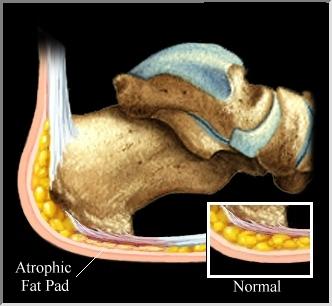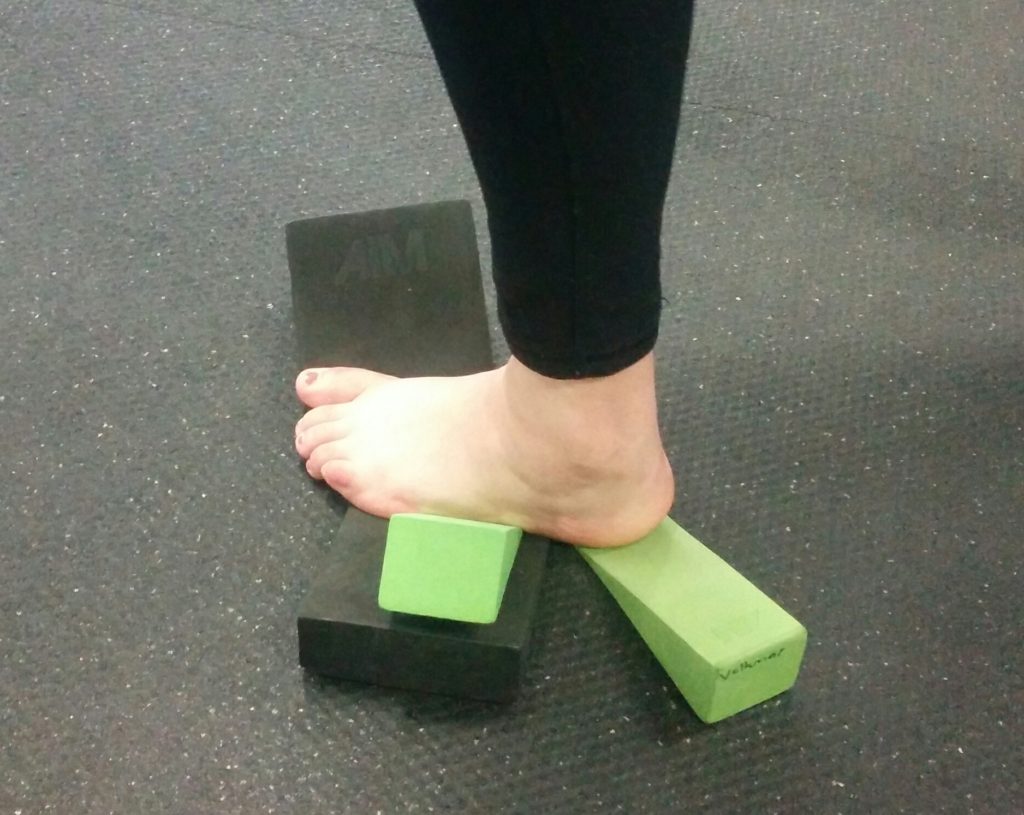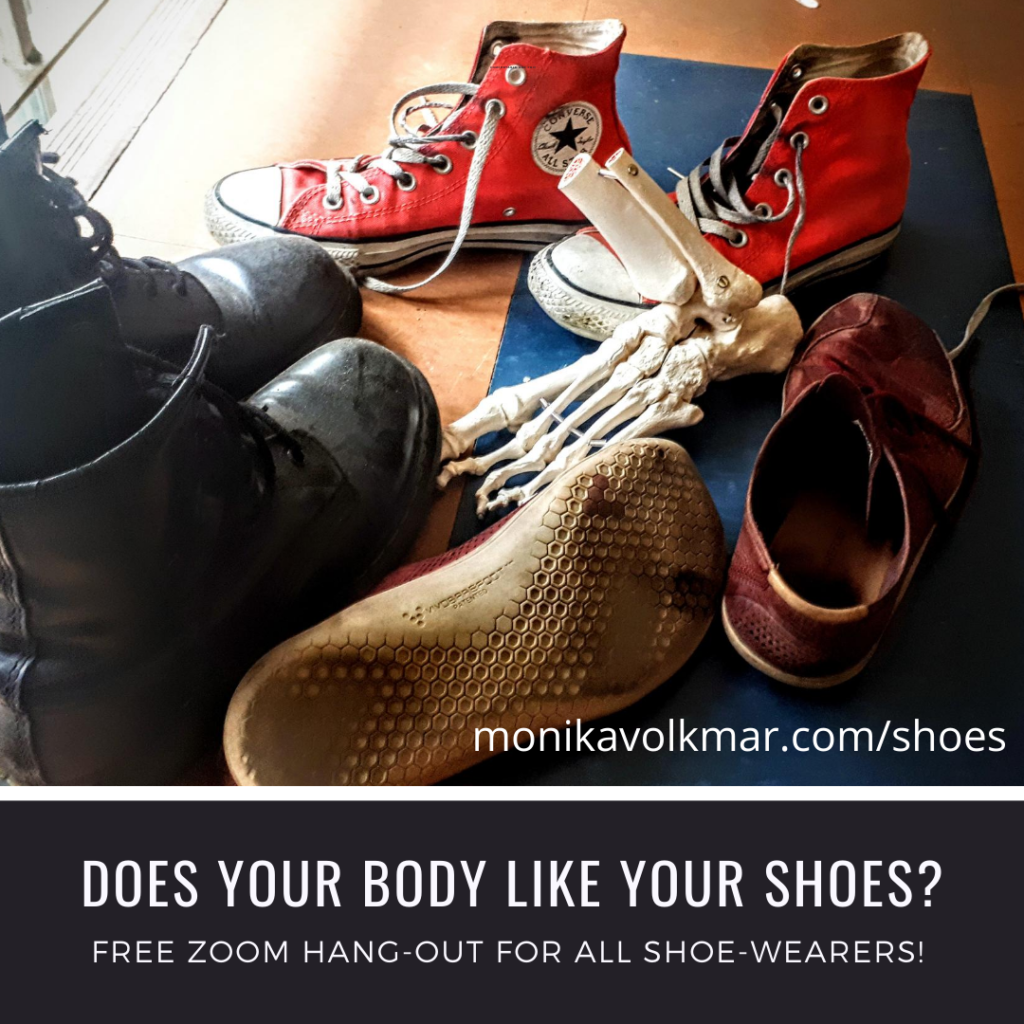Last Friday my weekly Movement Deep Dive session was all about calcaneal motion: Let Your Heel Bone Slide!
Before you read the rest of this blost, take a moment to get in the mood with da Maestro himself:
I’m not sure WHICH of the 33 vertebrae Maestro is referring to by “backbone”… But for today I will opportunistically pretend he’s talking about the pelvis (including the 9 total vertebrae of the sacrum and coccyx), because that makes for a smoother segway into today’s topic…
A movement detective’s comprehensive guide to calcaneal motion!
In today’s post and series of six tutorial videos, we’ll be covering:
- What is the heel bone (calcaneus)?
- What motions does this bone do in three dimensions when we walk? And can your calcaneus access those triplanar motions?
- How should calcaneal motion couple with pelvis and skull motion in the gait cycle for more ease and efficiency?
- Could a movement restriction at your calcaneus be impacting on movement of your pelvis of skull (reducing or liberating)?
If you don’t want to read, simply follow along with the videos and explore your own calcaneal motion- The embodied learning approach is better anyway 😉
But first… The basics.
What is the calcaneus?
The calcaneus is the big sturdy bone at the back of your foot.

It articulates with the talus above, the cuboid on the lateral side, and the navicular on the medial side.
Its the bone that first meets the ground in the heel strike phase of gait, so it has a nice cushy layer of fat to help it absorb the shock from each foot step.

The achilles tendon, plantar fascia, along with 9 muscles of the foot and lower leg attach to the calcaneus, including soleus and gastrocnemius (the two big juicy calf muscles).
So whenever there is an issue with any of those muscles, like achilles tendinitis, plantar fasciitis, or any other “itis” of the foot, we should get on our detective hats and look at how well the calcaneus can move.
Got a big toe issue, like a bunion? Hammer toes? Limited big toe extension? Other weird toe stuff I’ve never heard of?? The infamous flexor hallucis longus (flexor of the big toe) does not actually attach to the calcaneus, but has its own special groove that runs along the medial side of the calcaneus, behind the sustentaculum tali.

Your calcaneus should be able to move in three dimensions while you walk so that all it’s attaching musculature and tissues can lengthen and contract with every step you take.
Motion of the calcaneus, and its neighbour the ankle, also play an important role in venous return– Pumping the blood back up to the heart, because gravity makes that a little harder.

One reason people may get varicose veins is because of an increase of blood pressure in the venous system because the blood isn’t pumping effectively back up to the heart. Making sure the heel and ankle complex can move optimally to prevent venous blood backflow can reduce the chance of varicosity and distortion of the veins.
So… Calcaneal motion is kind of important!
Unfortunately many of us have restrictions in one or more planes of calcaneal motion (me included!), which can lead to a multitude of whole body issues, not only locally at your foot.
What if your heel bone can’t slide?
As mentioned above, one could experience any number of effects, ranging from local stuff such as a knee issue or plantar fasciitis, to distal issues like neck restriction and discomfort (stay tuned for how to assess that in part 6 of this calcaneal motion 101 video series).
The following two videos are clips, from Friday’s Let Your Heel Bone Slide session, to acquaint you with your calcaneus.
And now let’s take a look at the tri-planar movements your calcaneus ought to be able to do, and how to name them. We’ll be using the same langauge we’d use to name the movement of the pelvis (if you took my Liberated Body workshop, or are an Anatomy in Motion student, this will be familiar):
Being able to name and feel the motions a part of your body should be able to do is important in healing our bodies, and re-patterning movement. However, a barrier can be that every school of thought seems to use their own preferred anatomical langauge, and when everyone’s using different words to describe the same movements it can be super confusing!
The nomenclature I chose may not be the most “text-book-technical” anatomical verbiage, or sound fancy, but it is accurate and specific to describing the bone’s motion. So for those of you who are interested, here’s a little “univeral translation” chart:
TRIPLANAR CALCANEAL MOTION:
| Sagittal Plane | Frontal Plane | Transverse Plane | |
| Pelvis language | Anterior and posterior tilt | Hiking and dropping | Rotation right and left |
| Anatomical language | Plantar and dorsiflexion | Eversion and inversion | Internal and external rotation |
| Foot pressure distribution | 12 o’clock: Front (anterior) | 3 and 9 o’clock (medial and lateral) | 3 and 9 o’clock (medial and lateral) |
I really don’t care what words you use. You can make up your own terms, as long as you and your body know what’s happening.
Also note that in the video I am exagerating the size of calcaneal motions. In reality, they are much smaller. Calcaneus motion also happens concurrently with motion of the rest of the foot (and the rest of the body…), not in isolation, to give us pronation and supination.
Let’s move along and look at how the backbone and heel bone slide together.
What motion relationship do the calcaneus and pelvis have in gait?
This is where can start to have a little fun (if you’re a movement nerd like me).
The pelvis and calcaneus have a specific movement relationship in gait that should happen unconsciously for efficiency with each step.
Before I say more, check out this next clip:
In case you didn’t watch the video: When you walk, your calcaneus, pelvis, and skull move in the same directions, in all three planes of motion, at all times. Cool right?
So…
When your pelvis rotates right (which happens whenever you step forwards with your left leg), both heel bones, and your skull should also be rotating to the right right.
When your pelvis anteriorally tilts, so too should your calcaneus and skull.
Now, I know you’re dying to check and see if these movement relationships are present for your body, right? 😉
The next three videos are guided check-ins will help you do that:
- #1 How well can your calcaneus move?
- #2 How well does your calcaneus move in harmony with your pelvis?
- #3 How could a lack of calcaneal motion impact (restrict or liberate) motion at your pelvis and skull?
Calcaneus movement check-in
This first little check-in is to feel if your calcaneus moves appropriately while you are weight-bearing onto your leg.
Could you feel the movement from back, outside corner to front-inside corner of your heel when you bent your knee? Or did you skip right forwards into your forefoot and toes?
Now let’s bring your pelvis into the equation…
Pelvis and calcaneus movement check-in
In this next video, we’ll be checking in to see if your pelvis and calcaneal movements are synced up for ease and flow as you walk.
It’s not enough just to be able to move your calcaneus on its own. Does it move in the right relationship with your pelvis? Follow along and see what you find:
Are your pelvis anterior and posterior tilts synced up with your calcaneus anterior and posterior tilts? How about the hikes, drops, and rotations? What’s missing from your movement map?
Lastly, let’s tune in to see if your calcaneal motion has an impact up the chain, at your pelvis, neck, and skull.
How does calcaneal motion impact on neck motion?
What if a movement restriction at your calcaneus, due to an old ankle sprain for example, could be related to a movement restriction at your neck?
This final video is by far the most fun to play along with! Give yourself 10 minutes to geek out on how movement of your heel could be influencing stuff all the way up to your neck:
My personal findings:
To use me as an example, in the chance it helps you interpret your own data…
If I prop my calcaneus into more anterior tilt it frees my neck in both flexion and extension in the sagittal plane.
When I nudge my left calcaneus into a left hike- outside edge higher, more pressure on the inside edge (ie eversion) my neck motion into lateral flexion to the right (left skull hike) feels much happier.
So when I give my calcaneus(es) (calcanei?) back what’s missing, it has a positive effect on structures above.
So could it be that a “neck problem” might have a component to it that involves the foot?
Could it be that a hip problem is related to a heel that can’t move?
These things are good to know so we can approach any issue at one part of the body as a whole body issue.
This has become the over-arching intention of my Movement Deep Dive sessions: Let’s understand, explore, and restore the body’s potential for movement, one part at a time. Zooming in, zooming out, and integrating it all as a whole.
Conclusions?
Your calcaneus moves in three dimensions as you walk. Unless it doesn’t 😉
This three dimensional motion should occur in a specific interaction with pelvis and skull motion: Your heel, pelvis, and skull travel in the same direction, in all three planes, with every step you take.
A neck restriction could be related to a calcaneal motion restriction, and wouldn’t you want to know abut that? I sure would, so I can stop stretching my neck and get to the real root of the issue.
If you would like to learn even more about foot mechanics and how to use your “calcaneus influecing tools” more effectively, I recommend you check out Gary Ward’s online course Wake Your Feet Up. You’ll even get a set of official AiM wedges mailed to you, and more instructions for how to use them. But in the meantime, I’ve found that socks and towels work just fine 😉

This leads us into to one final important question regarding footwear..
Are you wearing shoes that could be messing with your pelvis and neck?
It’s quite possible…
If a foot motion restriction could lead to a neck restriction, then could a shoe that restricts foot motion also restrict motion elsewhere? For sure!
In fact, I have a system you can use to check that out for yourself.
My inaugural monthly Movement Nerd Hangout in September was dedicated to testing out whether your shoes or orthotics are working for you, or messing with your body.

Check out the entire 90 minute session, Are Your Shoes Working For You? for free, and get the PDF handout I created to test and document allll of your shoes.
That’s it for today folks 🙂 I hope you had fun exploring your bones and practicing your DIY movement detective skills with me today.
Feel free to share this blog post and video series with people in your life with stiff feet, or if you think it offers a useful perspective. And let me know what you discovered about YOUR calcaneal motion when you have a spare moment 🙂


